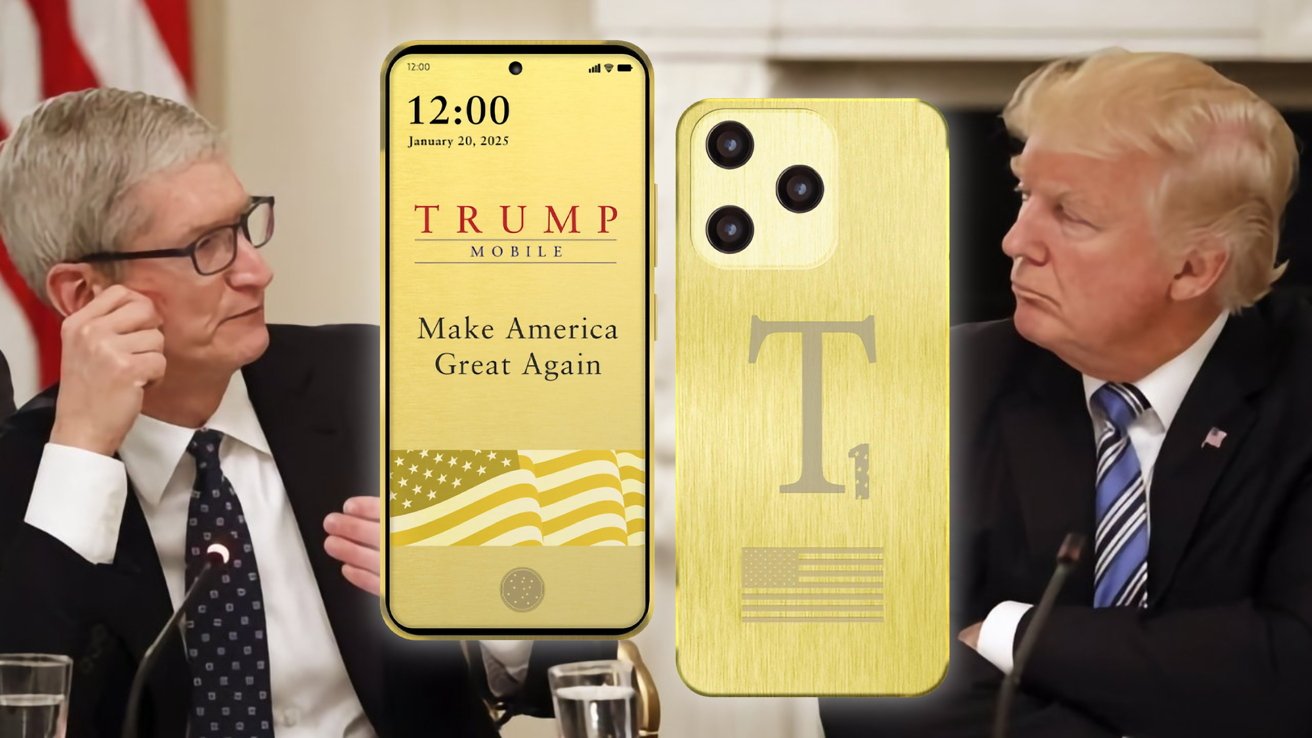 |
Donald Trump's "Made in America" Smartphone: A Game-Changer or a Gimmick? |
Donald Trump Just Launched a Smartphone Trump T1 – Should Tech Giants Be Worried?
The Vision Behind the "Made in America" Phone
The core premise of the "Made in America" smartphone initiative aligns with a broader political and economic agenda focused on bolstering domestic manufacturing and creating jobs within the United States. Proponents argue that such a move could reduce reliance on foreign supply chains, enhance national security by ensuring control over critical technology, and stimulate local economies. The idea resonates with a segment of the population that believes in a return to traditional manufacturing values and self-reliance.
However, the reality of producing a complex electronic device like a smartphone entirely within one country is incredibly challenging. The global tech ecosystem is built on a highly specialized and distributed network of suppliers, each contributing specific components, expertise, and patented technologies. From semiconductors and displays to camera modules and batteries, the sourcing of these parts often spans multiple continents, leveraging the most efficient and cost-effective production hubs.
Carl Pei's Candid Reaction: "We're Cooked!"
Nothing CEO Carl Pei's seemingly hyperbolic declaration, "We're cooked!", encapsulates the apprehension felt by many in the established tech world.
 |
| X screen grab! |
His concern likely stems from several factors. Firstly, a fully "Made in America" phone could face considerably higher production costs due to higher labor expenses and the need to establish new domestic supply chains for components currently produced more efficiently elsewhere.
Trump T1 Phone: Details
Trump Mobile will release the T1 Phone in August, priced at $499 (around Rs 42,893) with a $100 down payment. The gold-colored smartphone boasts a 6.8-inch AMOLED display with 120Hz refresh rate, 50MP main camera, 5000mAh battery, and runs Android 15. The device features 12GB RAM, 256GB expandable storage, and includes both fingerprint and AI face unlock security.Marketed as "designed and built in the United States," the T1 Phone targets customers seeking American-made alternatives in a market dominated by foreign manufacturers. The smartphone industry sees over 60 million annual purchases in the U.S., with nearly all devices manufactured overseas.
The Feasibility of "Made in America" Tech
Achieving a truly "Made in America" smartphone requires overcoming immense logistical, technological, and economic hurdles.
Building a domestic ecosystem that can compete with established global players would require massive investment in research and development, manufacturing infrastructure, and a highly skilled workforce. It would also necessitate a complete re-evaluation of existing trade agreements and intellectual property rights. While the intention to create American jobs is commendable, the practicalities of unwinding decades of globalized production are daunting.
Potential Impacts on the Tech Landscape
If the "Made in America" smartphone initiative gains traction, its implications could be far-reaching:
- Increased Costs for Consumers: Domestic production often translates to higher manufacturing costs, which would likely be passed on to consumers in the form of more expensive devices. This could make American-made phones less accessible to a broad market.
- Innovation Challenges: Restricting sourcing to domestic suppliers could limit access to cutting-edge technologies and stifle innovation. Global collaboration often drives advancements, and an isolated approach might hinder the pace of technological progress.
- Geopolitical Ramifications: Such a move could trigger retaliatory protectionist measures from other countries, potentially leading to trade wars and further fragmentation of the global economy.
- Supply Chain Resilience: While the aim is to enhance resilience, building entirely new domestic supply chains from scratch would initially be less efficient and potentially more vulnerable to disruptions until fully mature.
- Market Niche Creation: The "Made in America" phone might carve out a niche market for consumers prioritizing patriotism and domestic job creation over price or features, similar to other niche products.
Beyond the Hype: What Does it Mean for Consumers?
For the average consumer, the emergence of a "Made in America" smartphone presents a complex choice. On one hand, it appeals to a sense of national pride and a desire to support local industries. On the other hand, it could mean paying a premium for a device that might not offer the same level of technological sophistication or affordability as globally produced alternatives. The long-term success of such a product would depend heavily on its ability to compete on features, performance, and price, in addition to its unique selling proposition of being domestically manufactured.
Ultimately, the "Made in America" smartphone is more than just a new gadget; it's a statement about economic policy and the future of globalized trade. While the challenges are immense, the conversation it sparks about national industrial policy and supply chain security is undoubtedly significant.
FAQs
Q1: What is the main goal of the "Made in America" smartphone initiative? A1: The primary goal is to boost domestic manufacturing, create jobs within the United States, and reduce reliance on foreign supply chains for critical technology components.
Q2: Why did Carl Pei, CEO of Nothing, react strongly to the news?
A2: Carl Pei's reaction, "We're cooked!", reflects concerns about potential disruptions to global supply chains, increased production costs, and limitations on accessing diverse technologies that could impact companies like Nothing, which thrive on global collaboration.
Q3: Is it truly possible to make a smartphone entirely in America? A3: While technically possible, it presents significant challenges due to the highly specialized and globally distributed nature of the electronics supply chain. It would require massive investments and a complete overhaul of current manufacturing practices.
Q4: How might a "Made in America" phone affect consumers? A4: Consumers might face higher prices for the device due to increased production costs. While it offers the appeal of supporting domestic jobs, it could potentially mean a compromise on cutting-edge features or overall affordability compared to globally sourced alternatives.
Share your thoughts on the "Made in America" smartphone! Do you believe it's a viable path for the future of tech, or a challenging endeavor? Let us know in the comments below!


